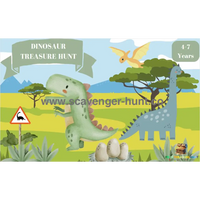🕰️Everything You Need to Know About the Escape Room Experience
Escape room games have taken the world by storm, offering a unique blend of adventure, challenge, and excitement. Whether you're a seasoned pro or a curious newbie, this comprehensive guide will delve into the fascinating world of escape rooms, providing insights, tips, and answers to your most pressing questions.
What is an Escape Room Game?
An escape room game is a physical adventure game in which players solve a series of puzzles and riddles using clues, hints, and strategy to complete the objectives at hand. Players are given a set time limit to unveil the secret plot which is hidden within the rooms. Themes can vary widely, from haunted houses and spy missions to ancient ruins and futuristic scenarios.
An escape room game is a physical adventure game in which players solve a series of puzzles and riddles using clues, hints, and strategy to complete the objectives at hand. Players are given a set time limit to unveil the secret plot which is hidden within the rooms. Themes can vary widely, from haunted houses and spy missions to ancient ruins and futuristic scenarios.
At its core, an escape room game is about immersion and interaction. Unlike traditional board games or video games, escape rooms place you in a real-world setting, requiring you to interact with the environment around you. You might find yourself searching for hidden compartments, decoding secret messages, or assembling physical objects to unlock the next part of your journey.
👉👉DISCOVER OUR INCREDIBLE ESCAPE ROOM SIGNS!!👈👈

The Anatomy of an Escape Room
An escape room typically consists of several key elements:
-
Theming and Storytelling: Each escape room is designed around a specific theme or narrative. This can range from solving a murder mystery in a detective's office to escaping from a sinking submarine. The storyline sets the tone and guides the players through the game, making the experience more immersive and engaging.
-
Puzzles and Challenges: The heart of an escape room lies in its puzzles. These can be logical, physical, mathematical, or observational. Common types include:
-
Lock and Key Puzzles: Finding the right key for a specific lock.
-
Cipher and Code Puzzles: Decoding messages using various encryption techniques.
-
Pattern Recognition: Identifying patterns or sequences to progress.
-
Physical Puzzles: Manipulating objects or solving hands-on tasks.
-
Clues and Hints: To help players navigate the challenges, clues are scattered throughout the room. These might be hidden in plain sight or require solving smaller puzzles to uncover. Game masters, who monitor the progress, can also provide hints if players get stuck.
-
Time Limit: Players are usually given a set time limit, typically 60 minutes, to complete the game. This time constraint adds a sense of urgency and excitement, pushing players to think quickly and act decisively.
-
Team Dynamics: Escape rooms are designed for groups, usually ranging from 2 to 10 players. Success relies heavily on teamwork, communication, and the ability to collaborate under pressure. Each player’s unique perspective and skills can contribute to solving the puzzles and escaping in time.
Types of Escape Room Puzzles
Escape rooms are known for their diverse range of puzzles. Here are some common types:
-
Logic Puzzles: Require deductive reasoning and critical thinking. Examples include Sudoku, riddles, or sequence puzzles.
-
Math Puzzles: Involve arithmetic or algebra to find a solution. These puzzles might require players to balance equations or find numerical patterns.
-
Physical Puzzles: Involve manipulating objects within the room. This could mean assembling pieces, arranging items in a specific order, or using tools to unlock mechanisms.
-
Search and Find Puzzles: Encourage players to thoroughly search the room for hidden objects, keys, or clues.
-
Word Puzzles: Include anagrams, crossword clues, or word searches. Decoding these often reveals critical information or hints.
-
Sensory Puzzles: Engage senses beyond sight, such as listening for audio cues, feeling for hidden compartments, or even smelling certain items to find clues.
The Role of the Game Master
The game master plays a crucial role in the escape room experience. They are responsible for setting up the room, explaining the rules, and guiding players through the game. During the game, the game master monitors progress through cameras and microphones, ready to provide hints or assistance if needed. Their goal is to ensure players have a fun, challenging, and fair experience.
Why Try an Escape Room?
-
Engagement: Escape rooms offer a break from the mundane, engaging players in an exciting, interactive environment.
-
Problem-Solving Skills: They enhance critical thinking and problem-solving abilities as players tackle various puzzles and challenges.
-
Social Interaction: Perfect for friends, family, or coworkers, escape rooms foster teamwork and communication.
-
Unique Experience: Each escape room is different, providing a fresh and unique adventure every time you play.
-
Sense of Achievement: Successfully escaping provides a strong sense of accomplishment and satisfaction.
Escape room games are more than just a fun pastime; they are an adventure that tests your wits, teamwork, and creativity. With diverse themes and puzzles, they cater to a wide audience, making them an ideal choice for a variety of occasions, from casual get-togethers to corporate team-building events. So gather your team, embrace the challenge, and get ready to unlock an unforgettable experience!
👉👉DISCOVER OUR INCREDIBLE ESCAPE ROOM SIGNS!!👈👈

The Origins of Escape Room Games
Escape rooms originated in Japan in the early 2000s and quickly spread worldwide. Initially inspired by "escape-the-room" video games, these physical versions brought the digital thrill into the real world, allowing participants to immerse themselves fully in the narrative and challenges.
Escape rooms originated in Japan in the early 2000s and quickly spread worldwide. Initially inspired by "escape-the-room" video games, these physical versions brought the digital thrill into the real world, allowing participants to immerse themselves fully in the narrative and challenges.
A Brief History of Escape Rooms
The concept of escape rooms can be traced back to the popularity of "escape-the-room" video games, which emerged in the late 1990s and early 2000s. These games required players to solve puzzles and find hidden objects to escape a locked room, captivating gamers with their challenging and immersive gameplay.
Recognizing the potential to translate this digital experience into the real world, Takao Kato, the founder of SCRAP Co., created the first live-action escape room in Kyoto, Japan, in 2007. This pioneering venture was met with enthusiasm and quickly gained traction, leading to the establishment of more escape rooms across Japan.
Global Expansion and Evolution
Following the success in Japan, escape rooms began to appear in other parts of Asia, and by 2012, they had made their way to Europe and North America. The concept resonated with a global audience, leading to rapid expansion and diversification in the types of themes and puzzles offered.
-
United States: The U.S. saw a boom in escape rooms around 2014, with many entrepreneurs seizing the opportunity to create unique experiences. The variety of themes expanded significantly, with rooms inspired by popular culture, historical events, and fictional narratives.
-
Europe: European escape rooms often incorporated intricate storylines and high-quality set designs, emphasizing the immersive aspect of the experience. Countries like Hungary and the Netherlands became known for their innovative and challenging escape rooms.
-
Worldwide Spread: Today, escape rooms can be found in almost every major city around the globe. They have become a popular form of entertainment, appealing to a wide range of audiences, from casual players to enthusiasts who travel specifically to experience different escape rooms.
Innovation and Technological Advancements
As escape rooms grew in popularity, the industry saw significant innovation and technological advancements:
-
Advanced Set Design: Modern escape rooms often feature elaborate sets that rival those of movie studios. These immersive environments enhance the storytelling and make the experience more engaging.
-
Interactive Technology: Many escape rooms now incorporate advanced technology such as RFID (Radio Frequency Identification) sensors, touch screens, and automated systems. These technologies create dynamic puzzles and interactions that were not possible in the early days of escape rooms.
-
Virtual Reality (VR): Some companies have developed VR escape rooms, combining the physical and digital worlds to create a hybrid experience. These VR escape rooms offer unique challenges and allow for scenarios that would be impossible to recreate physically.
-
Customizable Experiences: To cater to different skill levels and preferences, some escape rooms offer customizable experiences. Players can choose the difficulty level or even select specific puzzles and story elements.
Cultural Impact and Popularity
The rise of escape rooms has had a significant cultural impact:
-
Entertainment Industry: Escape rooms have influenced other entertainment forms, including TV shows, movies, and board games. They have become a cultural phenomenon, with fans eagerly discussing and reviewing their experiences online.
-
Corporate Team-Building: Many companies use escape rooms for team-building exercises. The collaborative nature of the games helps improve communication, problem-solving, and teamwork skills among employees.
-
Educational Value: Educators have also recognized the potential of escape rooms as educational tools. By designing rooms around educational themes, teachers can create engaging and interactive learning experiences for students.
From their humble beginnings in Japan, escape room games have evolved into a global entertainment sensation. They offer a unique blend of storytelling, puzzle-solving, and immersive experiences that captivate players of all ages. As the industry continues to innovate and grow, escape rooms are set to remain a popular and exciting adventure for years to come. Whether you're a seasoned player or new to the world of escape rooms, there's always a new challenge waiting to be unlocked.
Why Are Escape Rooms So Popular?
Escape rooms have surged in popularity across the globe, captivating diverse audiences with their unique blend of adventure, challenge, and entertainment. Here are some of the key reasons why escape rooms have become a beloved activity for many.
Immersive Experience
Escape rooms offer a profound break from reality, plunging players into a fully themed environment where they can live out different stories. Whether it's solving a mystery in a haunted mansion, embarking on a space mission, or escaping from an ancient tomb, the immersive settings allow players to feel like they are part of the narrative. The detailed set designs, sound effects, and props create a believable world that heightens the overall experience.
Team Building
One of the strongest appeals of escape rooms is their effectiveness in fostering teamwork. These games are designed to require communication, cooperation, and collective problem-solving. Each team member's unique strengths and perspectives are valuable, making escape rooms ideal for corporate team-building events, family outings, and social gatherings. Working together to solve puzzles and overcome challenges helps build trust and camaraderie among participants.
Mental Challenge
Escape rooms provide a rigorous mental workout, challenging players to think critically and creatively. The variety of puzzles—ranging from logical and mathematical to physical and observational—requires players to use different types of intelligence and problem-solving skills. This mental stimulation is not only enjoyable but also satisfying, as players experience a sense of achievement with each puzzle they solve and every clue they uncover.
Unique Form of Entertainment
Escape rooms offer a distinct form of entertainment that combines elements of theater, role-playing, and puzzle-solving. Unlike passive activities such as watching movies or playing video games, escape rooms engage participants in active and interactive experiences. Players become the protagonists in their own stories, making decisions and facing consequences in real-time. This dynamic form of entertainment appeals to those seeking something new and exciting beyond traditional leisure activities.
Social Interaction
In an era where digital interactions often overshadow face-to-face communication, escape rooms provide a refreshing opportunity for social interaction. Players must communicate effectively, share ideas, and collaborate closely to succeed. This real-life interaction strengthens social bonds and enhances the overall enjoyment of the experience.
Versatility and Variety
The versatility of escape rooms adds to their widespread appeal. With a myriad of themes and difficulty levels, there is an escape room for everyone—whether you are a novice or an expert, a fan of horror or mystery, or looking for a lighthearted adventure or a challenging mental quest. This variety ensures that players can always find a new and exciting challenge.
Replay Value
While some might think escape rooms are a one-time experience, many venues offer multiple rooms with different themes and puzzles, encouraging repeat visits. Additionally, the industry is continually evolving, with new rooms and innovative concepts being introduced regularly. This constant innovation keeps the experience fresh and engaging for returning players.
Stress Relief
Engaging in escape room activities can also serve as a great stress reliever. The immersive and engaging nature of the games allows players to forget about their daily worries and focus entirely on the task at hand. The adrenaline rush from racing against the clock and the satisfaction of solving puzzles can provide a therapeutic break from routine stressors.
Personal Growth
Escape rooms can also contribute to personal growth. They challenge players to step out of their comfort zones, face new situations, and develop problem-solving and critical-thinking skills. Successfully escaping from a room can boost self-confidence and provide a sense of accomplishment.
Escape rooms have captured the hearts and minds of people around the world for good reason. They offer an unparalleled combination of immersive storytelling, teamwork, mental challenge, and entertainment. Whether you're looking to strengthen team bonds, challenge your mind, or simply have a fun and unique experience, escape rooms deliver on all fronts. Their growing popularity is a testament to their ability to provide memorable and engaging adventures that cater to a wide audience.
Tips for a Successful Escape Room Experience
Participating in an escape room can be an exhilarating and rewarding experience, especially when you and your team manage to escape before time runs out. To maximize your chances of success, consider these practical tips:
Communicate Effectively
Effective communication is the cornerstone of a successful escape room experience. Share findings and ideas with your team immediately. If you discover a clue, make sure everyone knows about it. When working on a puzzle, verbalize your thought process so others can chime in with their insights. Clear and open communication helps ensure that everyone is on the same page and can contribute effectively to solving puzzles.
Manage Time Wisely
Time management is crucial in an escape room. Keep an eye on the clock and be mindful of how much time you're spending on each puzzle. If you find yourself stuck on a particular challenge for too long, it's wise to move on and tackle other puzzles. You can always come back to the difficult one later. Balancing your time effectively helps ensure that you make steady progress throughout the game.
Divide and Conquer
To make the most of your team's abilities, split up to tackle different puzzles simultaneously. This strategy allows you to cover more ground and solve multiple challenges at once. However, it's essential to regroup regularly and share progress. This way, everyone remains informed about what's been accomplished and what still needs to be done, ensuring a cohesive team effort.
Pay Attention to Details
In escape rooms, the smallest details can often hold the key to solving puzzles. Be thorough in your search for clues and examine your surroundings carefully. Look for hidden compartments, unusual patterns, and subtle hints that might be easily overlooked. Attention to detail can make a significant difference in your ability to decipher complex puzzles.
Stay Calm and Positive
Escape rooms are designed to be challenging, and it's easy to become frustrated if you're struggling with a puzzle. However, maintaining a calm and positive attitude is essential. Encourage your teammates and remind each other to stay focused and optimistic. A positive mindset helps keep the team's morale high and fosters an environment where creative problem-solving can thrive.
Additional Tips for Success
-
Organize Clues: As you find clues and solve puzzles, keep the clues organized. Place used and unused items in separate areas to avoid confusion. This organization can help you track your progress and ensure that no crucial piece of information is overlooked.
-
Use Hints Wisely: Many escape rooms offer a limited number of hints. Use them strategically. If you're genuinely stuck and time is running out, don't hesitate to ask for a hint. It can provide the nudge needed to get back on track.
-
Listen to the Game Master: Pay attention to any instructions or tips provided by the game master before you start. They often give valuable insights into how the room works and what to expect.
-
Stay Flexible: Be open to changing your approach if something isn’t working. Sometimes the solution requires thinking outside the box or trying a different method.
-
Celebrate Small Wins: Each puzzle solved is a step closer to escaping. Celebrate these small victories to keep the team motivated and energized.
A successful escape room experience relies on effective communication, strategic time management, teamwork, attention to detail, and a positive attitude. By following these tips, you and your team can enhance your chances of escaping and ensure that you have a memorable and enjoyable adventure. Whether you're a first-timer or a seasoned escape room enthusiast, these strategies will help you tackle the challenges and make the most of your experience
Different Types of Escape Rooms
Escape rooms come in a variety of styles and themes, each offering a unique set of challenges and experiences. Whether you’re a puzzle enthusiast, a story lover, or a thrill-seeker, there’s an escape room designed to suit your preferences. Here are some of the most popular types of escape rooms:
Classic Puzzle Rooms
Classic puzzle rooms are the backbone of the escape room industry. These rooms focus primarily on solving puzzles and riddles to unlock doors and progress through the game. Players encounter a series of challenges that test their logic, reasoning, and observational skills. The puzzles can range from deciphering codes and finding hidden objects to solving mathematical problems and completing pattern recognition tasks. These rooms are ideal for players who enjoy traditional brainteasers and logical challenges.
Narrative-Driven Rooms
Narrative-driven escape rooms emphasize story and character development, making players feel like part of an unfolding narrative. The room's design, puzzles, and overall atmosphere are intricately tied to the storyline, creating a more immersive experience. Players might find themselves investigating a crime scene, embarking on a treasure hunt, or unraveling a mystery. These rooms often require players to follow clues that advance the plot, making them ideal for those who appreciate a good story and enjoy becoming part of an interactive adventure.
Action-Based Rooms
Action-based escape rooms incorporate physical challenges and activities, providing a more dynamic and kinetic experience. These rooms might require players to navigate obstacle courses, use tools to manipulate objects, or engage in hands-on tasks that demand physical coordination and teamwork. The focus is on movement and interaction, making these rooms perfect for those who enjoy a more active and engaging experience. Action-based rooms often blend elements of traditional escape puzzles with physical challenges to create a unique and exhilarating adventure.
Horror-Themed Rooms
Horror-themed escape rooms are designed to scare and thrill, often featuring eerie atmospheres and suspenseful plots. These rooms create a sense of tension and urgency as players navigate through dark, foreboding environments filled with creepy props and sound effects. The puzzles and challenges in horror rooms are typically integrated into the spine-chilling storyline, heightening the overall sense of dread. These rooms are perfect for players who love the adrenaline rush of a good scare and enjoy the thrill of overcoming fear-inducing scenarios.
Additional Types of Escape Rooms
-
Historical Rooms: Set in historical contexts, these rooms immerse players in past events or eras. Players might find themselves solving mysteries in ancient Egypt, medieval castles, or World War II bunkers. The historical settings provide educational value along with entertainment.
-
Sci-Fi and Futuristic Rooms: These rooms transport players to futuristic or science fiction settings, such as space stations, alien planets, or advanced laboratories. The puzzles often incorporate advanced technology and futuristic gadgets, offering a unique and imaginative experience.
-
Fantasy and Adventure Rooms: Inspired by mythical and fantastical themes, these rooms immerse players in enchanted forests, magical kingdoms, or epic quests. The narrative and puzzles often involve magical elements, mythical creatures, and legendary artifacts.
-
Comedy and Lighthearted Rooms: Designed to be fun and humorous, these rooms offer a more relaxed and entertaining experience. The challenges are often quirky and playful, making them perfect for families and players looking for a light-hearted adventure.
-
Hybrid Rooms: Some escape rooms combine multiple elements, offering a blend of puzzles, narrative, action, and horror. These hybrid rooms provide a varied and multifaceted experience, catering to a wide range of interests and preferences.
The diversity of escape room types ensures that there’s something for everyone, regardless of their interests or skill levels. Whether you prefer solving intricate puzzles, immersing yourself in a compelling narrative, engaging in physical challenges, or experiencing the thrill of a horror-themed adventure, escape rooms offer a unique and captivating experience. Exploring the different types of escape rooms can provide endless hours of entertainment and challenge, making each visit a new and exciting journey.
How to Choose the Right Escape Room
Selecting the perfect escape room can make a significant difference in your overall experience. To ensure you and your group have a memorable and enjoyable time, consider the following factors when choosing an escape room:
Skill Level
Choose a room that matches your group's experience level. If you’re new to escape rooms, starting with an easier room can help you get the hang of the puzzles and gameplay without feeling overwhelmed. For seasoned veterans, opting for a more challenging scenario can provide the complexity and difficulty you crave. Many escape room venues categorize their rooms by difficulty level, so take advantage of this information to select an appropriate challenge.
Theme
Pick a theme that interests your group. Escape rooms come in a wide variety of themes, from mystery and horror to adventure and sci-fi. Choosing a theme that resonates with your group’s interests can significantly enhance the overall experience. Whether you’re solving a murder mystery, escaping from a haunted house, embarking on a treasure hunt, or navigating a futuristic spaceship, the right theme can immerse you in the narrative and make the adventure more engaging.
Group Size
Ensure the room can accommodate your group comfortably. Different escape rooms are designed for different group sizes. Some rooms are ideal for smaller teams of 2-4 players, while others can handle larger groups of up to 10 or more. Check the room’s capacity before booking to ensure everyone in your group can participate. Additionally, consider how your group works together; a smaller, tightly-knit group might prefer a more intimate setting, while a larger group might enjoy the dynamic of tackling challenges with more people.
Reviews and Ratings
Check online reviews and ratings to gauge the quality and difficulty of the escape room. Reading reviews from other players can provide valuable insights into what to expect. Look for comments on the room’s puzzles, theme, and overall experience. Pay attention to mentions of difficulty level to ensure it aligns with your group’s capabilities. Highly-rated rooms are generally a safer bet, as they have been vetted by numerous players and are more likely to offer a satisfying experience.
Additional Considerations
-
Location: Choose an escape room that is conveniently located for your group. Proximity can make the outing more enjoyable and less stressful, especially if you’re coordinating with multiple people.
-
Game Duration: Most escape rooms have a standard duration of 60 minutes, but some might offer shorter or longer experiences. Ensure the time commitment fits your group’s schedule.
-
Special Features: Some escape rooms offer unique features such as multiple rooms, high-tech gadgets, or live actors. Consider if these elements are appealing to your group and enhance the experience you’re looking for.
-
Booking Flexibility: Check the booking policies of the escape room venue. Some rooms may require advance reservations, while others might allow for more spontaneous visits. Ensure the booking process aligns with your planning needs.
-
Accessibility: If you have group members with specific needs, such as mobility issues or sensory sensitivities, check if the escape room can accommodate these requirements. Some venues offer accessible rooms or provide information on potential challenges.
Choosing the right escape room involves considering your group’s skill level, theme preferences, size, and the venue’s reviews and ratings. By taking these factors into account, you can select an escape room that provides the perfect balance of challenge, entertainment, and immersion for your group. Whether you’re looking for a beginner-friendly room, a thrilling horror experience, or a complex puzzle adventure, there’s an escape room out there that will meet your needs and ensure a fantastic experience.
👉👉DISCOVER OUR INCREDIBLE ESCAPE ROOM SIGNS!!👈👈

About Escape Room Games FAQ
How long does an escape room game typically last?
Most escape room games have a time limit of 60 minutes, although some can be shorter or longer depending on the complexity and design of the room.
Are escape rooms suitable for all ages?
Many
escape rooms are family-friendly, but some themes may be more suitable for adults. Always check with the provider for age recommendations and restrictions.
Do I need any special skills to participate in an escape room?
No special skills are required. Escape rooms are designed to be accessible to everyone, relying on teamwork and problem-solving rather than specific skills.
What happens if we can't solve the puzzles in time?
If you don't manage to escape within the time limit, the game master will usually come in and explain the remaining puzzles and solutions. Some venues may offer hints or additional time at their discretion.
Can we bring our phones into the escape room?
Most escape rooms ask players to leave their phones and other electronic devices outside to maintain the integrity of the game and ensure an immersive experience.
How should we prepare for our first escape room game?
Arrive on time, wear comfortable clothing, and come with a positive attitude and willingness to work as a team.
Conclusion
Selecting the right escape room is key to ensuring an enjoyable and memorable adventure. By aligning the room’s difficulty level with your group’s experience, choosing a theme that sparks interest, accommodating your group size, and considering reviews and ratings, you can set the stage for an exciting and immersive experience. Each escape room offers its own unique blend of challenges, storytelling, and interaction, making it essential to choose one that matches your group’s preferences and skill levels.
Whether you're a first-time player seeking an introductory challenge, a seasoned escape artist craving a complex puzzle, or a team looking for a themed adventure, the right escape room will enhance your enjoyment and satisfaction. As you prepare for your next escape room adventure, remember these tips to make the most of your experience. Gather your team, embrace the challenges, and get ready to unlock the fun and excitement that awaits!
Discover our Complete Scavenger Hunts Collection.


HOW TO PLAN A TREASURE HUNT FOR KIDS









































